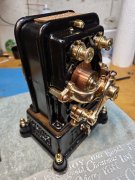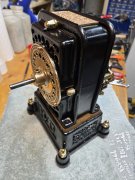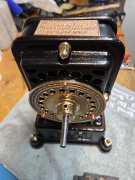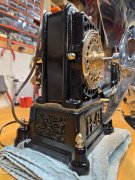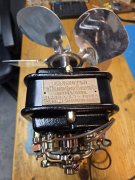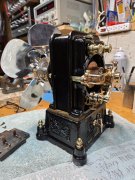I thought I would share a recent project with the crew...
2 years back I was given a true basket case of a project... Apparenty, and as the story goes, a buddy was cleaning out their gradfathers bacement, sorting stuff into piles to get rid of... The "basket of parts" in question was next to hit the metal scrap but was rescued at the last moment. looks "interesting" he said. I'll give it to Matt, He likes this old mechanical / electrical stuff... I honestly didn't even know what it was untill I saw the mangled armature
( bent, and wire sticking out. Desolderd from the commutator bars ) .... Realized it was an antique motor.
The basket of parts has sat untill recently when I finially decided to "get into it".
Unfortunately a bunch of the original pics I took were lost to an old cell phone that got wiped in the tranfer to a new one..
Any how, The motor as the brass plate says is a Holtzer Cabot, Built in Boston.
Cast iron body and all solid brass do-dads, It's HEAVY....
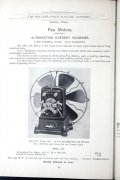
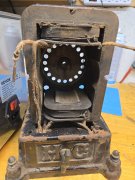
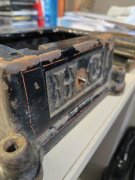
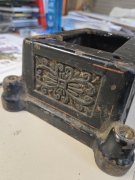
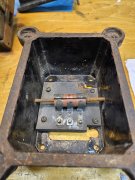
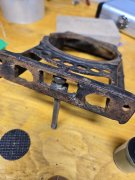
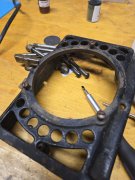
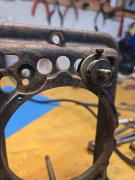
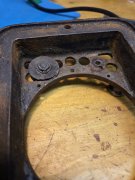
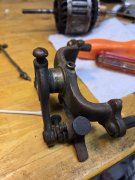
Lots more pics but 10 is the limit....
Questions I have for the well travelled tinkering bunch I chat with here...
52 Volts AC and apparently 133hz ? Who had that and when ? Found an additional grainy copy of a broshure on the net with this fan dated 1897.
If this from 1897 it must be very early AC ?... When did DC to homes start to vanish ?
52v @133hz... Hummm .... ( once its repaired ) & ( Hinting at the outcome... LOL ) I'm gonna try it on my Variac @ 25 v @60 hz ....
Power factor / Impeadence / Current / Heating etc.
Note: No current to the brushes... It's a Repulsion motor, The brushes "short" the armature communtators
to interact with the field... Fancy....
What is the proceedure for setting brush position ?
Anyone have any info on this ?
I'll post the Progress / Resortation pics shortly !
M
2 years back I was given a true basket case of a project... Apparenty, and as the story goes, a buddy was cleaning out their gradfathers bacement, sorting stuff into piles to get rid of... The "basket of parts" in question was next to hit the metal scrap but was rescued at the last moment. looks "interesting" he said. I'll give it to Matt, He likes this old mechanical / electrical stuff... I honestly didn't even know what it was untill I saw the mangled armature
( bent, and wire sticking out. Desolderd from the commutator bars ) .... Realized it was an antique motor.
The basket of parts has sat untill recently when I finially decided to "get into it".
Unfortunately a bunch of the original pics I took were lost to an old cell phone that got wiped in the tranfer to a new one..
Any how, The motor as the brass plate says is a Holtzer Cabot, Built in Boston.
Cast iron body and all solid brass do-dads, It's HEAVY....










Lots more pics but 10 is the limit....
Questions I have for the well travelled tinkering bunch I chat with here...
52 Volts AC and apparently 133hz ? Who had that and when ? Found an additional grainy copy of a broshure on the net with this fan dated 1897.
If this from 1897 it must be very early AC ?... When did DC to homes start to vanish ?
52v @133hz... Hummm .... ( once its repaired ) & ( Hinting at the outcome... LOL ) I'm gonna try it on my Variac @ 25 v @60 hz ....
Power factor / Impeadence / Current / Heating etc.
Note: No current to the brushes... It's a Repulsion motor, The brushes "short" the armature communtators
to interact with the field... Fancy....
What is the proceedure for setting brush position ?
Anyone have any info on this ?
I'll post the Progress / Resortation pics shortly !
M

